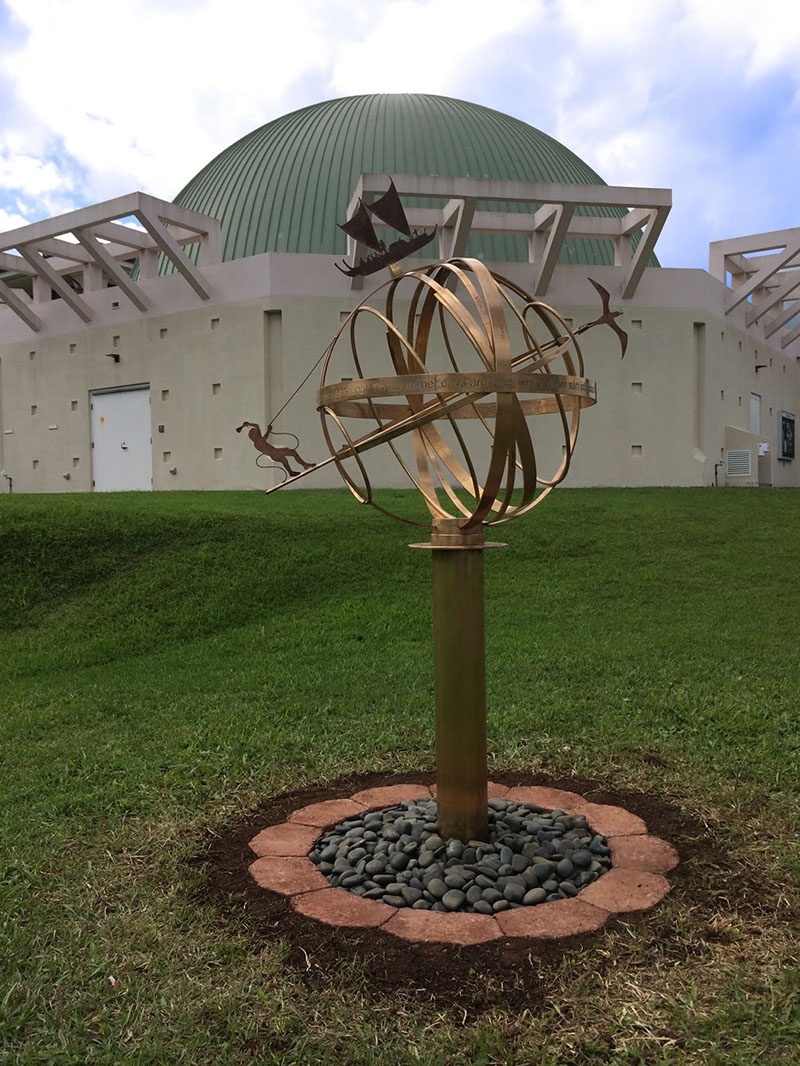Ke Ao o Ka Lā — The Realm of the Sun
This 32-inch diameter bronze armillary sundial was designed and commissioned by Joseph Ciotti and crafted in England by Brad Dillon of Charlestown Sundials.
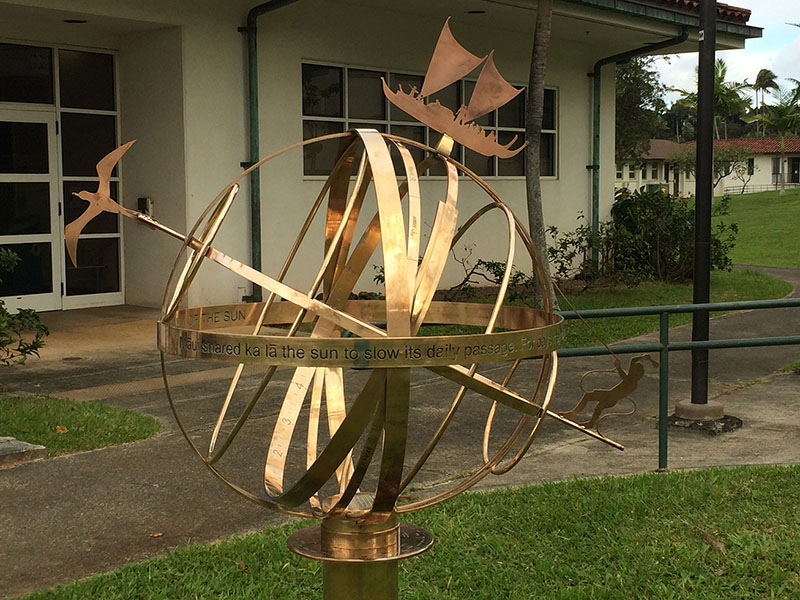
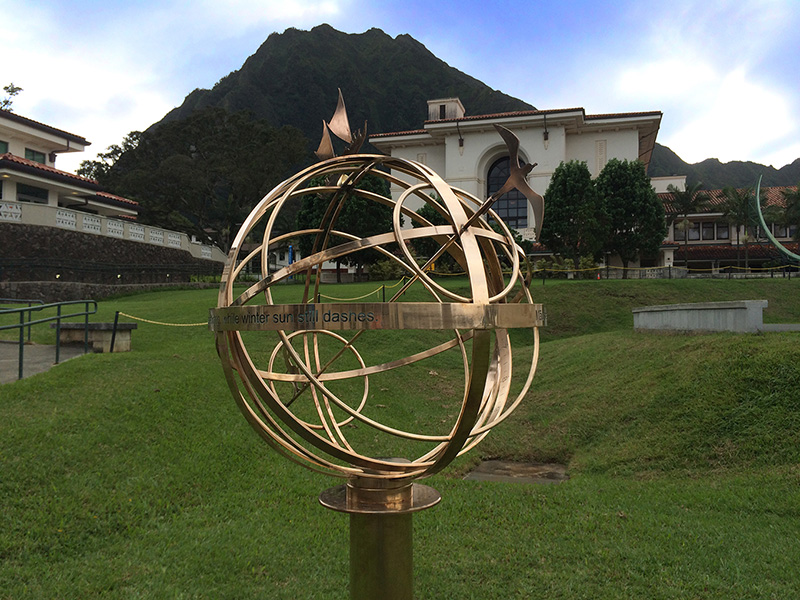
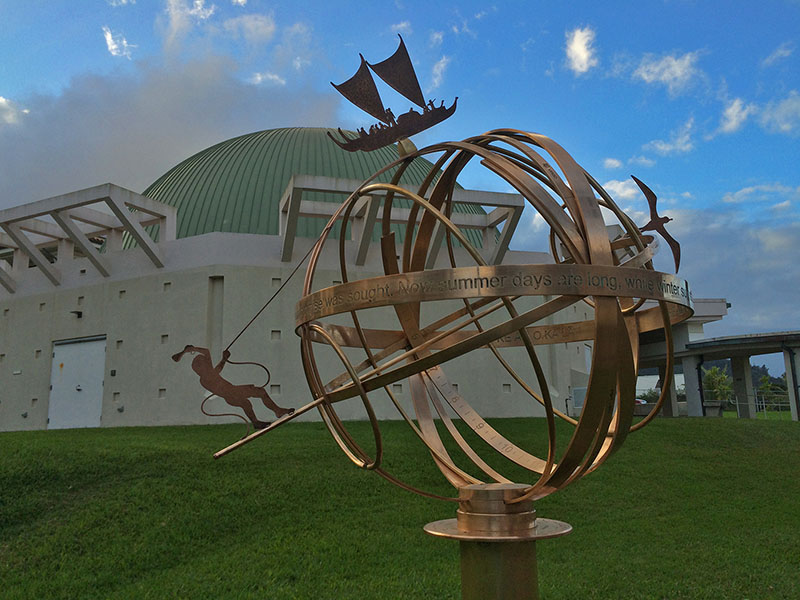
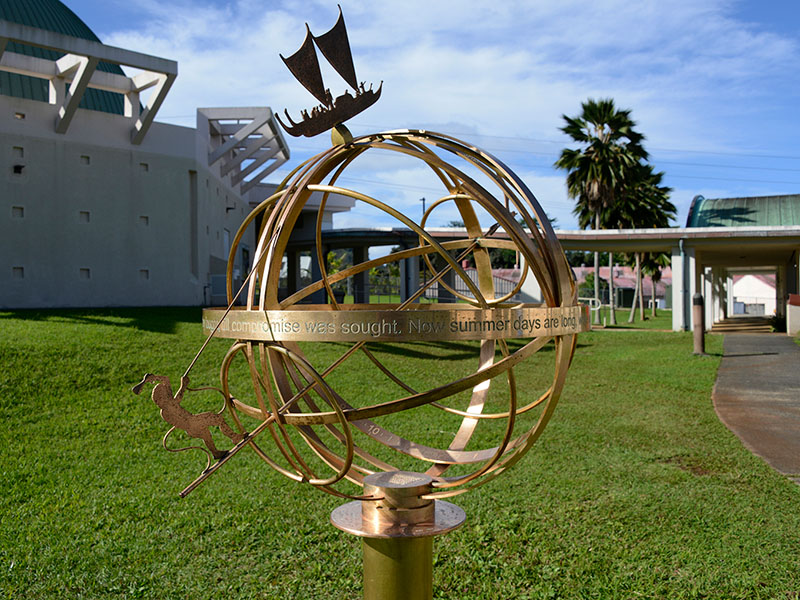
Named Ke Ao o Ka Lā — Hawaiian for The Realm of the Sun — this sundial is bedecked with a Polynesian motif. The circular base, which is inscribed with the directions of the Polynesian compass as conceived by master navigator Nainoa Thompson, includes a central plaque graphically illustrating the Equation of Time that corrects for the seasonal difference between apparent solar time and Hawaiian Standard Time (HST). A Polynesian double-hull voyaging canoe is mounted near the sundial’s apex — its navigator employing the ancient wayfinding skills of sighting the sun, stars and birds. Flying at the north end of the gnomon — the sundial’s shadow rod used for telling time — is a long-winged, fork-tailed frigate bird, known as the ‘iwa, that guides this ancestral canoe to Hawai‘i. At the south end of the gnomon is a silhouette of Māui snaring the Sun. This legendary feat, which poetically explains why summer daylight is longer than that of winter daylight, is encapsulated by a short poem around the horizon ring of the sundial:
Māui snared ka lā the sun to slow its daily passage.
For days they fought, till compromise was sought.
Now summer days are long, while winter sun still dashes.
At 32-inch (800 mm) in diameter, this armillary sundial consists of ten bronze rings representing the horizon, meridian (or solstitial colure), equator (or equinoctial ring), Tropics of Capricorn and Cancer, the Arctic and Antarctic Circles, a "prime vertical circle" (perpendicular to meridian circle and horizon that spans from east to zenith to west), equinoctial colure (perpendicular to meridian circle and equator passing through the north and south poles) and an “upright ring” (between the prime vertical and equator that is inscribed with the zodiacal signs).
The Ke Ao o Ka Lā sundial is mounted on a bronze plinth on the northeast lawn of the Hōkūlani Imaginarium.


